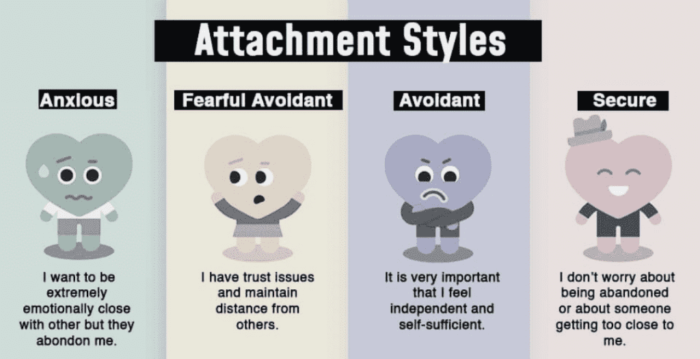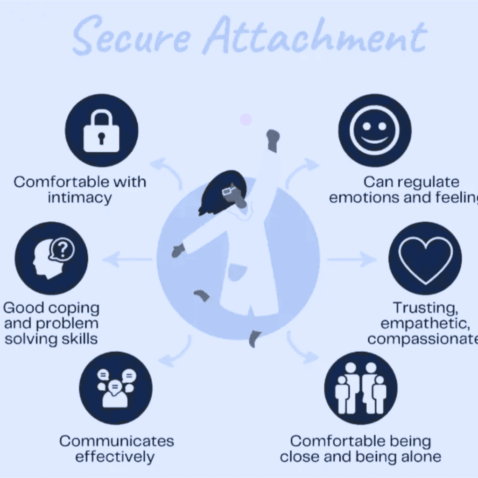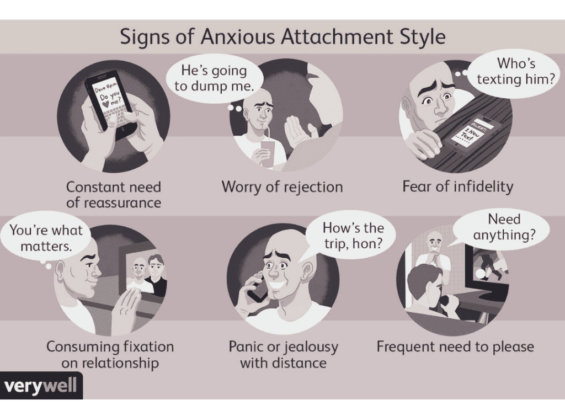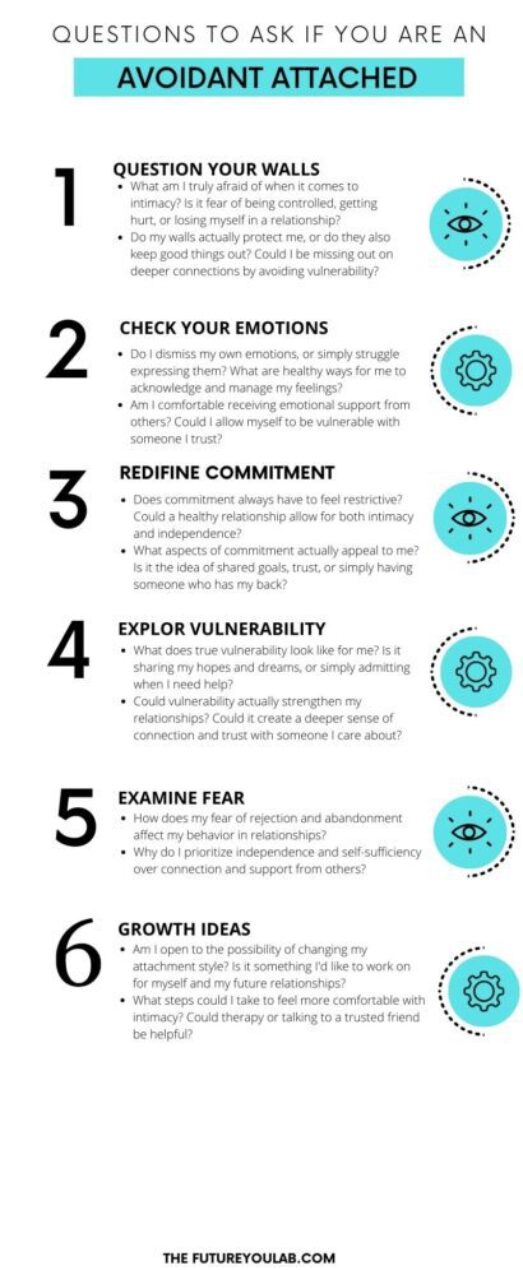Low-key Attached or Highly Needy? It’s Your Attachment Style Dear
The attachment style in Millennials and Gen Z can sometimes be like a game of emotional rollercoaster.
It is a primary cause of why 75% of Gen Z are single, 56% of men and women have been ghosted, with 83% of millennials spend up to two hours a day on dating apps.
That’s a whole lot of people swiping right and getting…well, not exactly what they swiped right for or the relationship they envisioned.
We’ve all been there.
One minute, someone’s showering us with affection, the next they’re vanishing faster than a free pizza at the office.
But what if the secret to navigating this emotional rollercoaster wasn’t about finding “the one”.
Instead, it has more to do with understanding yourself (and maybe your dates) a little better?
Turns out, the key might be in understanding your attachment style.
They’re like the blueprints for our close relationships and how our feelings unfold.
They explain why we crave constant contact.
Why we double texted that ex at 3am, become ice queens at the first sign of commitment, or everything in between.
But here is the thing, attachment styles aren’t magic decoder rings for love.
But, they can seriously explain why some relationships click for us and others fizzle out.
They might even tell you why you’re drawn to certain types (good or bad!), and what kind of bumps you keep hitting in the road.
This post is about decoding the mysteries of your attachment style and how it might be shaping your love life (or lack thereof).
Buckle up, we’re about to get real!
Introduction to Attachment Theories
What is Attachment Style
Attachment style is a way of explaining how you form close relationships and connect with others. Plain and simple.
Imagine it like a set of relationship habits, behavior, and attitudes you developed early in life, based on your experiences with your caregivers.
These habits and behaviors influence how comfortable you feel getting close to people, trusting them for support, and even how independent you are.
Your behavior and attitudes are thought to originate from the type of care you received in your earliest years with your parents or caregivers.
Such behaviors can be categorized into four attachment types: secure, anxious, avoidant, and disorganized
So, if you crave constant reassurance or have a hard time getting close emotionally, your attachment style might explain why.
Origins of Attachment Styles
Attachment styles aren’t some brand-new dating app trend. They actually have some history!
It all started with a curious psychologist in 1930 named John Bowlby who wondered why some babies clung to their caregivers while others seemed perfectly happy on their own.
Through his research, Bowlby realized these early experiences with caregivers shaped how comfortable kids felt getting close to others.
Fast forward to today, and psychologists have built on this idea to explain different attachment styles in adults.
Think of it as your emotional inheritance.
The way your parents or caregivers interacted with you can influence how you connect with others in love, friendships, and even work relationships.
The Characteristics of Attachment Theories
There are four main characteristics of attachment:
- Safe Haven: Your parent provides a safe and secure base for you as a kid, offering you comfort and protection during times of distress.
- Secure Base: Your caregiver’s presence enables you to explore the world, knowing that you can return for comfort and support.
- Proximity Maintenance: We as kids seek to maintain physical proximity to our caregivers, especially during times of stress or danger.
- Separation Distress: We experience distress when separated from our caregiver, reflecting the emotional bond between us.

Types of Attachment Styles

Secure Attachment Style
A secure attachment style is considered the healthiest type of attachment in close relationships.
It develops from consistent and reliable caregiving experiences we have in early life in a reliable and loving way.
If you have a secure attachment style, you will feel good on your own and in relationships.
Also, you’ll have a positive view of others, trust your partners, and are capable of building and long-lasting romantic relationships.
Are you securely attached?
Here are a few major points that you might resonate with so some extent or exhibit:
- You tend to be self-contented, social, warm, and easy to connect to and able to express your feelings.
- You tend to build deep, meaningful, and long-lasting relationships, and you are even well-liked in the workplace.
- You have confidence in the availability of your partner and their love.
This acts as a secure base from which you can seek protection and comfort during times of distress. - You are capable of forming lasting relationships and have positive views of themselves and others.
- You tend to trust your partners and do not feel the need to be jealous or doubt your loved ones’ intentions.
- You are able to accept displays of affection, without fear or confusion.
Soulmates are a myth, but finding someone who gets your need for both space and quality time? Now that’s a real win.
Secure Attachment Style: Childhood Vs Adulthood
Childhood
You explore surroundings freely when your caregiver is present and you’re easily comforted upon reunion after separation.
Adulthood
| Security – You feel safe and supported by your loved ones. You trust your partner to be there emotionally and physically. Affection – You’re open to intimacy and emotional closeness in relationships. You feel comfortable expressing your needs and emotions to your partner. Independence – You value both independence and connection. In other words, you can be yourself and explore individuality while maintaining strong connections. (No panic cheating texts when you are alone). Communication – You communicate openly and honestly with your partner. You express your feelings and needs assertively while listening to your partner’s perspective. Conflict Resolution – You work through conflict with your partner. |

Preoccupied/Anxious Attachment Style
A preoccupied or anxious attachment style is when you require constant need for reassurance and a fear of abandonment. Plain and simple.
You may be overly focused on the status of the relationship and constantly worry about potential problems.
In other words, you often crave intimacy but remain anxious about whether your emotional needs will be met.
You may become distressed if you perceive recognition and value from others as insincere or failing to meet your expectations.
This type of attachment style is often formed in childhood when maybe your caregiver is inconsistent in meeting your needs.
This eventually leads to a sense of insecurity and anxiety in your relationships.
Fact – Approximately 20% of the population has this attachment style.
Are you an anxiously attached person? (I was one back in the day!)
You might have an anxious attachment style if you tend to exhibit or show the some of the following:
- You become needy or clingy in your closest relationships. This can manifest as frequent texting, constant check-ins, or jealousy.
- You behave in selfish or manipulative ways when feeling vulnerable, or shy away from intimacy altogether.
- You may have colder relationships with your parents during childhood and struggle with feelings of self-worth and acceptance by others.
- You have a deep fear of being rejected or abandoned by your partner. This fear can lead to clingy behavior or possessiveness.
- You often have a negative view yourself and may feel unworthy of love.
This can make you more susceptible to feeling insecure or threatened in relationships. - You may misinterpret your partner’s actions or behaviors as signs of rejection, even if they are not intended that way.
- You may be overly focused on the status of the relationship and constantly worry about potential problems than your partner.
It is all about having our partner live up to our fantasized version of what a relationship should be in our head.
Here’s an example:
My girl/guy hasn’t texted back in 30 minutes.
Does this mean they’re already planning to ghost me?
Frantically scrolls through TikTok for validation and existential dread.
Maybe another thirst trap selfie will make them love me again?
Or should I text more and add more affection to my messages.
You get the picture.

Dismissive/Avoidant Attachment Style
Avoidant attachment style is the exact opposite of anxious attachment.
It is when you tend to avoid vulnerability, closeness, and intimate attachment to others.
Imagine a person who builds walls around their heart to keep people out.
It’s like they are constantly running on “Do Not Disturb” mode.
You might have an avoidant attachment style if exhibit some of the following traits as shown by science and research:
- Fear of intimacy: You may crave independence and freedom, fearing that closeness will lead you to being controlled or hurt.
- Downplaying emotions: You often downplay your own emotions and those of others as unimportant or overdramatic.
Imagine yourself going through a terrible time because you just lost your cat.
Your avoidant partner would say something like ‘take it easy, she was already old’. (really happened to my friend!) - Uncomfortable with vulnerability: You opening up emotionally feels risky to you.
You may avoid conversations that require deeper connection. - Seeming self-sufficient: You project an image of being self-sufficient and not needing anyone.
- Difficulty with commitment: Serious relationships can feel stifling to you, and commitment might be scary.
You might even crack jokes about marriage being a social construct.
- You: Ugh, my boss is stressing me out again.
- Dismissive-avoidant friend or partner: That sucks, but hey, at least you get a paycheck, right? scrolls through TikTok.
While this style can seem chill on the surface for you, it can lead to face isolation and difficulty in forming deep connections.
What To Do If You Have An Avoidant Attachment

Fearful/Disorganized Attachment Style
The fearful-avoidant attachment style, also known as disorganized attachment, is a pattern of behavior characterized by both high levels of anxiety and avoidance in relationships.
This attachment style stems from intense fear, often as a result of childhood trauma, neglect, or abuse.
If you have this attachment style, you may tend to feel that you don’t deserve love or closeness in a relationship.
You might also tend to struggle to self-soothe your emotions.
Also, you might also feel frightened and unsafe in relationships and the world around you.
This is how it develops or shows.
In childhood:
Fearful-avoidant attachment is characterized by very disorganized behavior.
It stems from childhood experiences where your caregivers were unpredictable or even frightening.
Imagine yourself as a kid seeking comfort from your caregiver.
So you approach them for closeness and love.
However, they were dismissing, unloving sometimes, or weren’t caring enough.
In adulthood:
You may display attachment behaviors typical of avoidant children.
So you become socially withdrawn and untrusting of others.You often cope with distancing yourself from partners but continue to experience anxiety and your partner’s love.
You may experience intense emotions but struggle to express or regulate them healthily.
So to put these ideas in perspective, think about it this way:
You low-key want a relationship, but also kinda terrified of one.
Imagine this: you match with someone amazing online, then spend the next week convincing yourself they’re a serial killer in disguise.
Fun times!.
Just remember that these four attachment styles are like horoscopes:
They might be a bit relatable but basing your entire relationship dynamic on them is basically like navigating love with a blindfold on.
As you know, there’s more to human connection than just four neat categories.
But they offer a good baseline to understand your emotions and behavior in your relationships.
Now this is a good inlet to the next topic.
How To Develop a Secure Attachment Style
For you to become a securely attached person and change your attachment to this healthy style, you have to keep one thing in mind.
First, it is key to understand what your attachment style is and work towards developing a more secure attachment.
Forget beach retreats in Bali (they might work though).
Here are some key steps based on the latest from science-based research:
- Awareness of Attachment Style: The first step is to become aware of your attachment style and how it influences your relationships.
There are some online quizzes you can take to get an idea about your attachment style.
My favorites are from the Attachment Project and Psychology Today. - Build Secure Relationships: Surround yourself with securely attached individuals who can serve as role models for healthy relationships.
I’m sure you have seen some people around you whom you admired their personality, emotional connections and relationships overall.
That’s your goal to start with. - Seek Emotional Stability: Surround yourself with reliable friends and seek partners who provide consistent love and an emotionally stable environment.
- Prioritize Communication: Foster open communication in your relationships.
Express your needs and feelings openly and encourage your partner or friends to do the same.
Mutual understanding is key to building deep and fulfilling connections. - Develop Emotional Attunement: Emotional attunement means connecting with your own emotions and understanding the feelings of others.
So engage with securely attached individuals as this can help you recognize and reflect upon emotional shifts within yourself. - Maintain Autonomy and Intimacy: Strive to maintain a healthy balance between relying on your partner and meeting your own needs.
Embrace vulnerability and intimacy in relationships while maintaining your individuality. - Cultivate Forgiveness and Care: Practice forgiveness, empathy, and care in your relationships to foster deeper emotional bonds
(If your partner is doing the same for you). - Recognize your patterns: Notice how your attachment style shows up in your relationships.
Are you anxious? Avoidant? Journaling can help identify patterns. - Consider therapy: If your attachment style is causing significant distress in your relationships, a therapist can provide guidance and support.
They can help you develop coping mechanisms and build healthier relationship patterns.
Nuances and Criticisms of Attachment Theory
Cultural variations: Attachment theory is primarily based on Western research.
Cultural norms and expectations around family structure and child-rearing can influence attachment styles.
- Fluidity of attachment styles: While your early experiences play a role, attachment styles are not set in stone for you.
They can evolve throughout your life through therapy, self-awareness, and positive relationships. - Focus on caregivers: Attachment theory primarily focuses on your early caregiver interactions.
However, other factors like peer relationships, social experiences, and even genetics may shape your attachment styles.
- Oversimplification of complex dynamics: Attachment theory can categorize people into neat boxes (secure, anxious, avoidant, etc.).
Real-life relationships are more complex, and your attachment styles can manifest in various ways.
- Fact – The pop psychology book “Attached” has been criticized for oversimplifying attachment styles and not accounting for disorganized attachment.
- Limited focus on adult relationships: The theory primarily focuses on childhood experiences.
Your adult relationships and experiences can also significantly influence attachment styles.
This is something I’ll be working on by interviewing Millennials and Gen Z soon. - Lack of consideration for individual differences:
Attachment theory doesn’t fully account for your personality traits and coping mechanisms that can influence how you connect with others.
- Attachment and mental health: Attachment styles can be linked to mental health concerns like anxiety and depression.
However, the relationship is complex, and other factors also play a role. - Self-fulfilling prophecies: You being overly focused on attachment styles could lead to self-fulfilling prophecies.
For example, if you believe you are anxiously attached, this can make you misinterpret your partner’s actions and act in ways that reinforce that belief.
Focus on progress, not perfection:
Don’t get hung up on achieving a perfect “secure” attachment style.
It’s about progress, not perfection.
Celebrate your small wins, like having an open and honest conversation with your partner, even if it feels a little scary.

How to Measure Attachment Style: Childhood VS Adulthood
Before we dive in, remember that earlier I mentioned two quizzes you can take online for free.
For the following, both of these tests are complex assessments and typically administered by trained professionals.
So this is a brief explanation for you to have a general overview, but they don’t replace a professional evaluation if you consider either.
Childhood
Chances are you are already beyond your childhood years.
But if you have a kid or simply want to get an early sign of their attachment, this test can answer that.
It is called The Strange Situation.
It is a clever assessment tool designed for infants and young children (around 9 -18 months old).
It can’t be directly used with you as an adult, but it provides valuable insights into early attachment patterns.
Here’s how it works:
- Your child is observed in a playroom with their caregiver (usually your wife).
- The scenario unfolds in stages:
- Your wife plays with the child.
- A stranger enters the room.
- Your wife leaves the room briefly (creating a mild separation).
- Your wife returns and reunites with your kid.
Researchers observe how your kid reacts at different stages, particularly during separation and reunion.
- Secure attachment: your kid might be securely attached if he may be upset by the separation but is easily comforted your wife return.
- Anxious attachment: If your kid is anxiously attached, he might show excessive distress during separation and may be ambivalent or hesitant upon reunion.
- Avoidant attachment: Your kid might be avoidantly attached if she shows little distress during separation but may seem indifferent or avoidant upon reunion.
- Fearful attachment: Your kind might show a mix of seeking and rejecting comfort from your wife upon reunion.
He might be overly fearful of the stranger or display intense anger against his mother for leaving.
The Strange Situation offers a window into your kid’s early attachment style.
This can influence not only their future relationships but also for you to take notes of what can be done.
Adulthood
The Adult Attachment Interview (AAI) is a semi-structured interview developed by Carol George, Nancy Kaplan, and Mary Main to assess an adult’s state of mind regarding attachment.
Here’s how it works:
- You are asked to describe your childhood experiences with your caregivers.
- The interviewer probes for details about the quality of care you received, the emotional availability of your caregivers, and how your needs were met.
- Based on the narrative and the way you talk about your experiences, the interviewer categorizes your attachment style as secure, anxious, avoidant, or disorganized.
Social Media Effect on Attachment Styles For Millennials and Gen Z
So, here is the hard reality:
we Millennials and Gen Z are drowning in connections on our phones, yet feeling lonelier than ever.
It’s like we ordered a fancy relationship app dinner, but all we got was a sad salad of #couplegoals and filtered vacations.
What gives? The issue is social media!
Fake Perfection, Real Insecurity
Social media is basically a land of highlight reels, where everyone’s relationships look like a fairytale.
Suddenly, your normal (but fight-free) relationship feels like a knock-off brand next to someone else’s staged grand gesture.
This constant comparison can leave you feeling insecure and anxious, especially if you’re already the type who needs constant reassurance (anxious attachment style).
The Like Trap
Likes and comments are the new social currency.
Let’s be honest, we all crave that dopamine hit of approval.
But the need for online validation can turn ugly, leading us to act like crazy texters or needy partners, all for those sweet, sweet likes.
Remember, secure relationships are built on self-worth, not the number of hearts under your selfie.
This goes double for you if you were an avoidant who feel pressured to present a flawless online image, pushing away any chance of real intimacy.
FOMO Meets FOCC: A Match Made in Hell
Social media bombards us with endless options, making us feel like we might miss out on “the one.”
This fear of commitment can make settling down feel like signing a life sentence, especially if you’re already avoiding getting too close.
The constant “what ifs” can leave you feeling paralyzed, making it hard to build deep connections.
So Many Choices, No Idea What to Choose!
Dating apps offer a lot of potential soulmates, but all that choice can be overwhelming!
It’s like being at a buffet and never being able to decide on a dish.
This analysis paralysis can lead us to form both anxious and avoidant attachment styles.
If you’re anxious, you might constantly question your choices.
And if you’re avoidant, you might shut down entirely, unable to pick just one person.
But Don’t Panic, We Can Fix This!
Social media isn’t all bad news.
Here’s how to fight back and take control of your love life:
- Be a Curator, Not a Consumer: Ditch the accounts that make you feel bad and fill your feed with real, inspiring people.
- Put Down the Phone, Pick Up a Friend: Real-life connections are way more fulfilling than virtual ones.
Spend quality time with your loved ones, phone-free! - Seek Genuine Connections: Find online communities that share your passions, not just your follower count.
- Practice Self-Love: Social media is a highlight reel, remember? Your life is beautiful too!
- Talk it Out: Communicate openly with your partner about social media use and its impact on your relationship if it really is impacting your relationship.
Social media now are a part of our life.
They are not entirely bad because they have made many things way easier like shopping, more friends around the globe and so on.
It is all about how you use them and to what end.
Are you using them to silence some internal inefficiencies?
To run away from a reality you are uncomfortable with?
These questions are tied to the attachment style you might be projecting and feeling.
By being mindful and taking control, you can use social media to enhance your relationships, not wreck them.
Remember, your secure attachment is built on trust, communication, and vulnerability.
Things that social media can’t replace, but can definitely support.
Conclusion
Let’s face it, Millennials and Gen Z are the kings and queens of overthinking everything from their next viral tweet to their dating app woes.
But what if the key to unlocking those confusing relationship patterns lies in your childhood experiences?
That’s where attachment theory swoops in.
We discussed how our early relationships with caregivers can shape the way we connect with others as adults.
We explored some ways and questions to ask ourselves to identify where we stand and how to steadily shift our emotional baggage.
Also, we decoded the four main attachment styles:
– secure (the relationship goals we all secretly wants),
– anxious (the “OMG they haven’t texted back in 5 minutes” crew),
– avoidant (the masters of emotional self-sufficiency, or at least that’s what they tell themselves),
– and disorganized (the emotional rollercoaster nobody asked for).
Here’s the TL;DR:
Understanding your attachment style isn’t about getting stuck in a mental health rabbit hole.
It’s about becoming a dating app detective, cracking the case of your own communication patterns, and ultimately, building healthier connections.
So, the next time you find yourself double-texting your crush or ghosting after a great first date, take a step back.
Your attachment style might be trying to tell you something, but it doesn’t have to write your entire relationship story.
Thanks for reading!
If you enjoyed this post, please share it with a friend who might need to read this. Id appreciate your support 🙂
Until next time!



